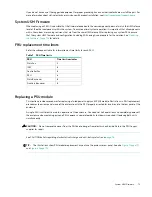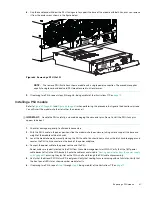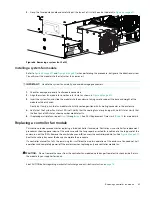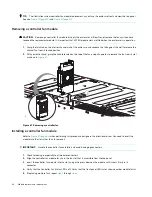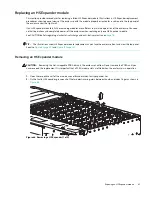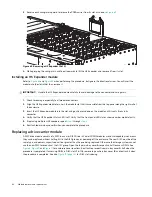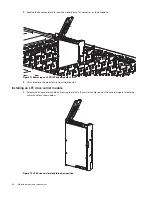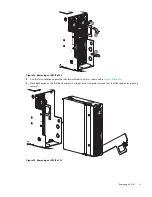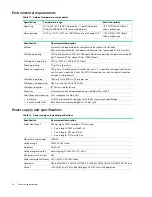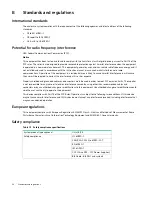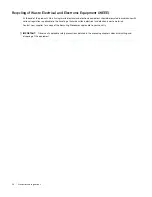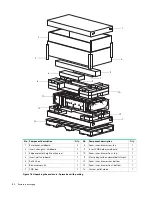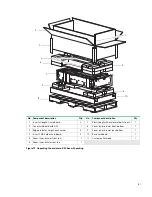
92
Module removal and replacement
Installing an IOM
See CAUTION bullets regarding
electrostatic discharge
and
anti-static protection
CAUTION:
If passive copper cables are connected, the cable must not have a connection to a common ground/earth point.
NOTE:
When performing the following procedure, refer to
while ignoring the directional arrow.
For installation, the IOM travels in the opposite direction relative to the arrow shown.
1.
Examine the IOM for damage, and closely inspect the interface connector. Do not install if the pins are bent.
2.
Grasp the IOM using both hands, and with the latch in the open position, orient the module and align it for insertion
into the target IOM slot.
3.
Ensuring the IOM is oriented as shown in the illustrations, slide it into the enclosure as far as it will go.
An IOM that is only partially seated will prevent optimal performance of the enclosure. Verify that the module is fully
seated before continuing.
4.
Set the module in position by manually closing the latch.
You should hear a click as the latch handle engages and secures the IOM to its connector on the back of the
midplane. Tighten the thumbscrew to secure the latch in place.
5.
Reconnect the cables.
NOTE:
After replacement, ensure that the system USM firmware and configuration (including SAS zoning) is correct for
the solution. Consult your solution service documentation for details on the correct procedures to verify and update
system USM firmware.
Verifying component operation
Expansion module
If the storage system is configured with expansion enclosures, the replacement IOM may take up to one minute to
initialize after the cables are connected. Verify that there are no illuminated Fault LEDs on the enclosure front panel or
the IOM faceplate.


